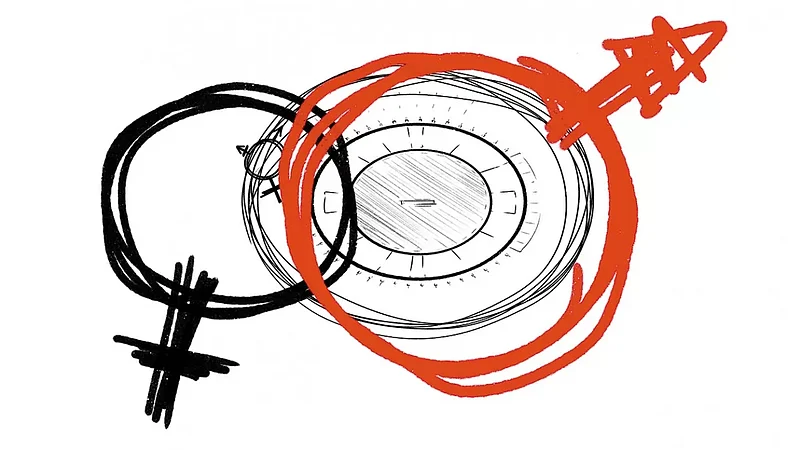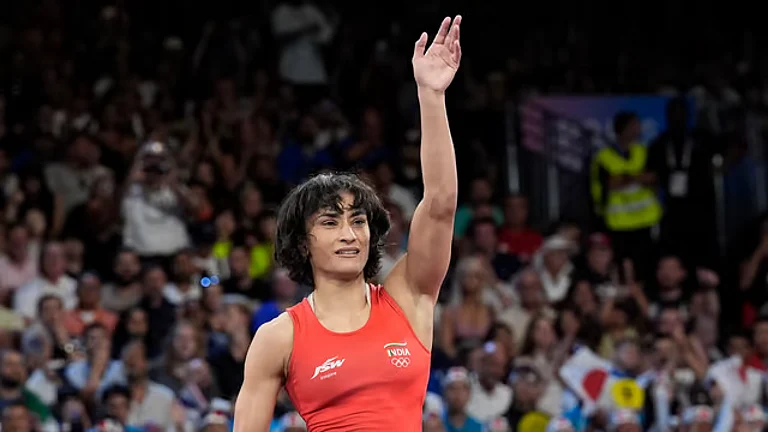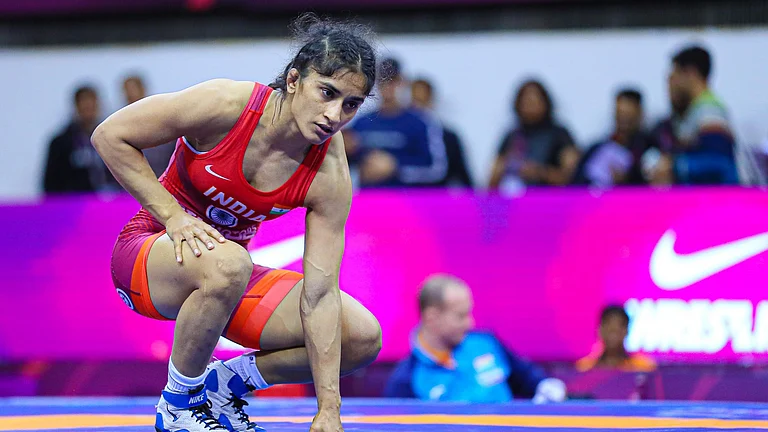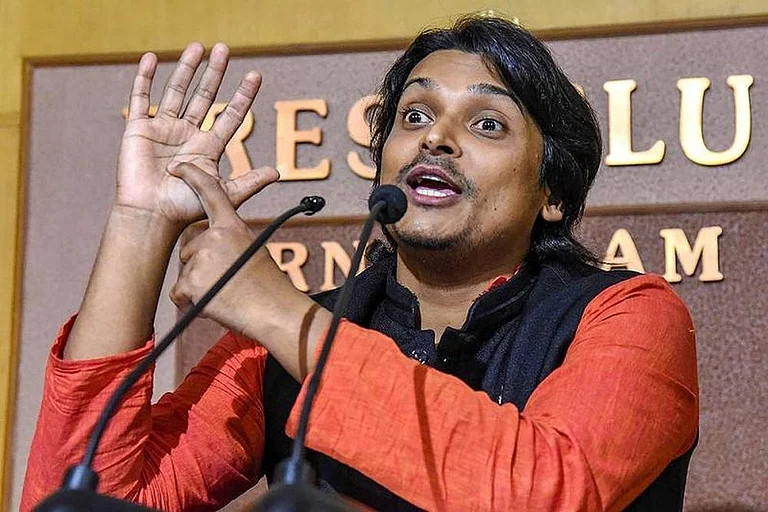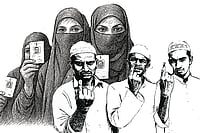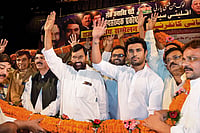It is a ‘travesty of sport’ that the women wrestlers in India are forced to wrestle with the mighty State—the Leviathan—just that the Leviathan has an identifiable face in the name of the Wrestling Federation of India (WFI), the principal governing body of the sport in India. The women wrestlers are indeed wrestling for justice.
The multiple world medallist, Vinesh Phogat, the Olympic medallist, Sakshi Malik, a minor and four other women wrestlers, filed an FIR against Brij Bhushan Sharan Singh—a BJP parliamentarian from Kaiserganj (UP) and a powerful figure in the WFI, alleging years of sexual harassment and abuse by him. The law, rather than taking its course swiftly in such a case, took a different direction, thanks to social-media discourse. Scores of wrestlers protesting, including Bajrang Punia, the Olympic medallist, for more than a couple of months, demanding the arrest of the accused, couldn’t succeed even after meeting with Union Home Minister Amit Shah. The support to the protesting wrestlers trickled in at the beginning but now, with farm leaders, panchayat leaders, opposition leaders, sportspersons, feminists and a small section of ‘non-godi’ media lending their hand, the protest has gained ground.
Such a protest against powerful and patriarchal institutions, by its very innate nature, is political and existential. What is noteworthy in this whole episode of sexual harassment and sexual abuse of women wrestlers, is that it opens up space to understand the gendered and sexualised dynamics of sport in general, in the West, and its impact on the rest of the world.
The Sex and Gender Nexus in Sport
The modern organised sport, especially in the West and the colonial states, since the mid-nineteenth century, has been a distinctly gendered activity, dominated by men. The social construction of the gender binary —male (masculinity) and female (femininity), reproduced itself onto sports during its early history. Cricket and rugby, two crucial team sports, emerged as masculinised sports, particularly in boys’ public schools of Victorian Britain, and represented the powerful and symbolic pride of the Anglo-Saxon male. Sport-related masculinity created ‘games for boys’ and extended the ‘cult of manliness’ throughout the British empire, including India. This dominant vision of athletic masculinity simply included the ideals of sportsmanship, strength and endurance, and women were excluded from the Victorian sporting revolution. Some of the key institutions and agencies that nurtured the phenomenon of sport regarded male sports as having major cultural value. During the early twentieth-century, the ideal of manhood and the character of the ‘gentleman’, much superior to the hoi-polloi, was shaped by public school athleticism and dominated both British and colonial sport.
The story of women in sport is a story of their struggles over many years for freedom and equality with the men within it. Sports conjure up an image of a moving physical body, of musculature, strength, agility and artistry. It is this nature of the moving body of women in sport that is being increasingly and explicitly clicked, qua soft-porn poses, for publicity calendars and are also overtly sexualised, as we have seen in the case of Sania Mirza or Steffi Graff. The memes of protesting athletes circulated in social media recently erase sportswomen’s desire for the love of the game and to win laurels. It is interesting to note that media and popular writing on sport align with the hyper-masculine celebration of men’s lives in sport and men’s sports, such as cricket, soccer and rugby. It is men, one way or the other, who dominate the associated activities of sport, especially via participation, mediation, management and finance.
Sports Feminisms
The first wave of female sports academics, in the west in the 1970s, started addressing the issue of marginalisation of women, both in sports and in the academy, and lobbied for social and legal reforms to give women equal access to opportunities as compared to men in sports. Jennifer Hargreaves in her book Sport, Culture and Ideology argues that the female athlete’s sexuality is often given more credence than her sporting skills, and she becomes, therefore, an object, the butt of smutty jokes. Both Vinesh and Sakshi Phogat have complained in the media that the innuendoes made to them have more to do with them being woman than being sportswomen.
Feminists, particularly those from the school of ‘cultural feminism’, claim that women, as active agents, struggle creatively for better conditions in sport, grasp the dialectical relationship between agency (freedom) and determination (constraints), and recognise the heterogeneity of women. This heterogeneity stems from the intersectionality of gender with class, caste, sexuality and other systems of domination. RW Connell’s book Hegemonic Masculinity poignantly reflects that boys and men participating in team sport exhibit conservative notions of masculinity such as misogyny, obedience to authority, compulsory heterosexuality and homophobia. The hyper-masculine male athlete, the book argues, tries hard to ‘prove’ his right to dominate women and make sport extremely inhospitable for them. Connell goes on to explain that it is not only lesbian women but also male gay athletes who remain closeted due to widespread homophobic discourse amongst teammates. In third world countries, gender and sexual discrimination in sport is deep due to the linkage of male domination and powerful sexual taboos with the everyday practice of religious, traditional and neo-colonial ideas. Post-modernist feminists essentially focus on the power relations within the arena of sports.
The Panoptic Gaze and Bodily Abuse
Women, unlike men, are subject to a constant gaze with respect to potential transgressions against the conservative and patriarchal meanings of femininity, the gaze akin to the Foucauldian ‘panoptican’ representing disciplinary power. The panoptic gaze operates within everyday discourse on health, fitness, fasting, dieting, exercising, and beauty and is peddled generously by commercial media. Women find the gaze difficult to resist as the disciplinarian gaze functions as a disembodied authority. The sporting body is disciplined, therefore, into ‘female-appropriate styles’, a body standard to be inculcated in girls and women. The patriarchal disciplinary power normalises the hierarchical power relations and produces docile, gendered and sexualised body within specific socio-historic contexts.
The differential unequal relations of physical and sexual power in sport makes it an ideal context for physical and sexual harassment. Powerful coaches and managers build relationships of trust and dependency between them and the athletes under their supervision, and in such a scenario, young athletes, particularly children, often find themselves vulnerable. In sport, sexual abuse and harassment are not new phenomena; female athletes have suffered at the hands of coaches, peers and others for long. It’s just that now, with the increase in protesters, the dome of silence that effectively functioned to reinforce personal and organisational denial has collapsed.
The Unmaking of Sport India
Clearly, ‘Sport India’ has taken a hit, and its image been sullied across the globe. United World Wrestling (UWW), the international governing body for the sport of amateur wrestling, has condemned the treatment meted out to India’s women wrestlers and has expressed its disappointment over the lack of results in the investigation. It urged relevant authorities to conduct a thorough and impartial investigation into the allegations. Thirteen feminist groups, mostly Left-leaning, and a few human rights organisations have expressed their outrage and condemned the support offered to the accused. The crisis of making and unmaking of Sport India, however, reveals the structures of power that gender and sexuality have in sport. India needs to enable its girls and women to have widespread accessibility and autonomy in sport and physical education. It must address the issues of sexual ridicule and denigration in sport and stand firmly with the fighting female athletes who pose a challenge to traditional notions of femininity.
(Views expressed are personal)
Tanvir Aeijaz teaches Public Policy and Politics at Ramjas College, University of DelhI







